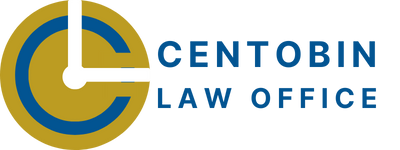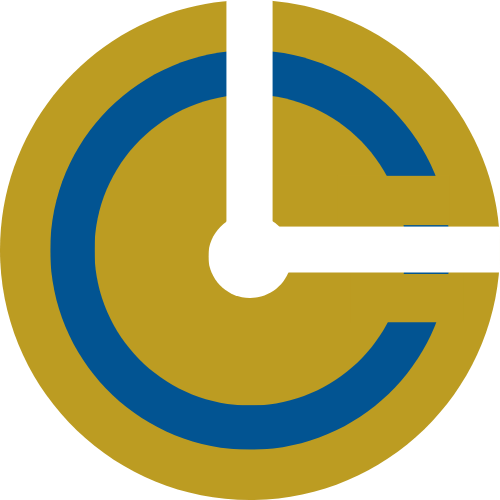
24 Mar How to Secure Your Rights Following a Personal Injury Incident
In Alberta, encountering a personal injury incident can be both physically and emotionally overwhelming. Understanding your legal rights and the steps you should take immediately following such an incident is crucial for your recovery and for securing the compensation you deserve. Personal injury law in Alberta is designed to protect victims who have suffered injuries due to someone else’s negligence or fault. Whether it’s a motor vehicle accident, a slip and fall on icy pavement, or an injury at work, knowing how to navigate the aftermath of your injury is essential. This guide aims to provide you with a clear and comprehensive understanding of personal injury law in Alberta, offering practical advice on immediate actions, legal proceedings, and how to seek professional legal help. With the right information and support, you can make informed decisions about your health, your rights, and your future.
Understanding Personal Injury Law in Alberta
Personal injury law encompasses a wide range of incidents, from motor vehicle accidents and workplace injuries to slip and falls on public or private property. These laws are designed to protect individuals who have been injured due to the negligence or wrongdoing of another party.
Several statutes govern personal injury claims in the province, including:
- The Insurance Act: This act outlines the regulations for motor vehicle insurance claims in Alberta.
- The Workers’ Compensation Act: This act provides coverage for employees who are injured on the job, offering compensation and benefits.
- Occupiers’ Liability Act: Governs the responsibility of property owners and occupiers to ensure their premises are safe.
Types of Personal Injuries Covered
Personal injury law in Alberta covers a broad spectrum of incidents, including:
- Motor vehicle accidents: Including cars, trucks, motorcycles, and bicycles involved in collisions.
- Workplace injuries: Injuries occurring in the workplace or during work-related activities.
- Slip and fall accidents: Incidents occurring on property owned or occupied by another party, due to unsafe conditions.
Immediate Steps Following a Personal Injury
Here are the crucial steps to take following an injury:
Ensuring Safety and Seeking Medical Attention
- Prioritize Safety: If you’re involved in a vehicle accident, move to a safe location if possible. For workplace or public space incidents, ensure you’re out of further harm’s way.
- Seek Immediate Medical Care: Even if injuries seem minor, it’s critical to get a medical evaluation. Some injuries might not show symptoms immediately.
Reporting the Incident
- Motor Vehicle Accidents: Report the accident to the police if there are injuries, significant damage, or if a law has been broken. Obtain a copy of the police report, as it’s vital for insurance and legal processes.
- Workplace Injuries: Notify your employer immediately and ensure they document the incident. This documentation is crucial for Workers’ Compensation Board (WCB) claims.
- Slip and Fall: Report the incident to the property owner or manager, ensuring they make a record of the event.
Importance of Documenting the Incident and Injuries
- Gather Evidence: Take photos of the accident scene, your injuries, and any property damage. Collect contact information from witnesses.
- Medical Documentation: Keep all medical reports, receipts, and a journal of your symptoms and recovery progress. This information is invaluable for insurance claims and potential legal action.
Taking these immediate steps not only supports your physical recovery but also strengthens your position in any future legal or insurance claims. With these initial actions taken, the focus shifts to the broader legal considerations and building a solid foundation for your claim. This preparation is crucial for navigating the complexities of personal injury claims, ensuring you’re well-positioned to protect your rights and pursue the compensation you deserve.
Protecting Your Legal Rights and Building a Case
After taking immediate steps following a personal injury, the next phase focuses on safeguarding your legal rights and assembling a strong foundation for your claim. This stage is critical for ensuring you’re positioned to secure fair compensation.
The Role of Documentation in Supporting a Legal Claim
- Comprehensive Evidence: Your collected evidence (photos, witness contacts, medical reports) forms the backbone of your claim. It provides tangible proof of the incident’s circumstances and your injuries.
- Detailed Records: Maintain a detailed account of all related expenses and impacts on your life, including lost wages, medical expenses, and how the injury affects your daily activities and mental health.
Statute of Limitations for Personal Injury Claims in Alberta
- Time Limits: Alberta’s Limitations Act sets a general two-year limit from the date of the incident to file a lawsuit. However, there are exceptions and nuances, so understanding these timelines is crucial.
- Early Action: Prompt action is advisable. Early consultation with a personal injury lawyer can ensure you don’t miss critical deadlines that could jeopardize your claim.
Importance of Not Admitting Fault
- Conversations at the Scene: Be cautious about what you say following an incident. Even seemingly innocent comments can be interpreted as admissions of fault.
- Dealing with Insurance Companies: When reporting the incident to insurers, stick to the facts. Insurance companies are skilled at identifying statements that could reduce their liability.
By meticulously documenting the incident and carefully managing communications, you set a solid groundwork for your claim.
The Claims Process
Once you have taken immediate steps and documented everything related to your personal injury, you are ready to navigate the claims process. This process can be intricate, involving negotiations with insurance companies and possibly legal proceedings.
Filing an Insurance Claim
- Your Insurance vs. the At-fault Party’s Insurance: Determine whether to file a claim with your insurance company or the at-fault party’s insurer. In Alberta, your insurance may cover you initially, with the possibility of seeking reimbursement from the at-fault party’s insurer.
- No-fault Insurance Benefits: Alberta operates under a mixed model that allows for no-fault benefits, meaning you can receive certain benefits from your insurer regardless of who is at fault, while still retaining the right to sue for additional damages.
When to Consider Filing a Lawsuit
- Limits of Insurance: If the insurance coverage is insufficient to cover your losses, or if there’s a dispute about liability, filing a lawsuit may be the next step.
- Seeking Legal Advice: Consulting with a personal injury lawyer can help you understand the merits of your case and the potential for compensation through legal action.
Role of the Alberta Courts in Personal Injury Claims
- Legal Process: If your case goes to court, it will follow a structured process including filing a Statement of Claim, going through discovery, and possibly a trial.
- Alternative Dispute Resolution: Before reaching trial, parties are encouraged to consider mediation or arbitration as a way to settle disputes. These methods can be quicker and less costly than court proceedings.
Potential Paths: Settlement, Mediation, Trial
- Settlement: Many personal injury claims are settled out of court. Settlements can provide compensation without the unpredictability of a trial.
- Mediation: A neutral third party helps both sides reach an agreement. This is often a quicker resolution method than going to trial.
- Trial: If a settlement can’t be reached, the case may go to trial, where a judge (and possibly a jury) will decide the outcome.
Whether dealing with insurance claims or pursuing legal action, each step you take can significantly impact the outcome of your case. The importance of professional guidance during this process cannot be overstated.
Working with a Personal Injury Lawyer
After a personal injury, considering whether to hire a lawyer is a significant decision that can affect the outcome of your case. A skilled personal injury lawyer can offer expertise, negotiate with insurance companies on your behalf, and, if necessary, represent you in court to ensure you receive fair compensation for your injuries.
When and Why to Consider Hiring a Personal Injury Lawyer
- Complex Cases: If your case involves severe injuries, disputed liability, or significant legal complexities, a lawyer can navigate these challenges effectively.
- Insurance Negotiations: Insurance companies aim to minimize payouts. A lawyer understands the tactics these companies use and can counteract them to protect your interests.
- Maximizing Compensation: An experienced lawyer can accurately assess the full extent of your claim, including long-term impacts, to ensure you receive comprehensive compensation.
Initial Consultation: What to Expect
- Case Assessment: The lawyer will review the details of your case, including evidence and documentation, to assess its viability and potential value.
- Legal Strategy: They should outline a proposed strategy for your case, including steps, timelines, and expectations.
- Fee Structure: Discuss the lawyer’s fees, typically a contingency fee for personal injury cases in Alberta, meaning the lawyer gets paid a percentage of the settlement or court award.
Fee Structures for Personal Injury Lawyers in Alberta
- Contingency Fees: Most personal injury lawyers work on a contingency basis, aligning their fees with the success of your case. This arrangement can make legal representation accessible, as you don’t pay upfront fees.
- Hourly Rates and Other Expenses: In some cases, lawyers may charge hourly rates or require payment for certain expenses. Ensure you understand all potential costs before hiring a lawyer.
Working with a personal injury lawyer can significantly influence the direction and outcome of your case. By choosing the right legal representative, you ensure that your rights are protected, and you’re positioned to receive the maximum compensation possible for your injuries.
Centobin Law Office in Calgary is dedicated to protecting individuals navigating the complexities of personal injury law. With a focus on experienced representation in a range of personal injury matters, we provide services in the following areas: motor accidents, slip and fall cases, wrongful death claims, and more. Our approach is centered on providing zealous representation to our clients, whether through traditional court-based litigation, alternative dispute resolution models like arbitration and mediation, or administrative hearings.
Centobin Law Office is committed to supporting its clients every step of the way, ensuring that their rights are protected and their interests are represented in the pursuit of justice and compensation. Reach out to us today for more information on how we can assist with your personal injury case.


No Comments